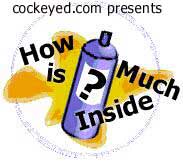. . . back to part 3 . . .
How much is inside hot water? - part 4
Recommendations
|
gas method
| kettle method |
|
Uses 0.3 kWh of chemical energy
|
Uses
0.36 kWh of chemical energy
|
|
Delivers: 0.11 kWh of hot water
|
Delivers: 0.11 kWh of hot water
|
and
0.19 kWh of heat in your kitchen
|
and
0.06 kWh of heat in your kitchen
and
0.19 kWh of heat in the cooling tower and electricity network
|
In the winter, or at any time when you want to warm your kitchen,
I firmly recommend using the gas method to make your
hot water.
Yes, the hob-with-saucepan is inefficient
- only about 37% of the energy from
the gas gets into the water(*); but the rest of the energy
gets into your kitchen, so it's not wasted.
|
On a summer day, when you don't want
extra heat in your house, I would probably recommend using the
kettle method. It uses slightly more chemical energy,
but it has the advantage of not making the kitchen sweaty.
|
|
|
(*) It's a coincidence that the hob-with-saucepan has the same
efficiency - roughly 37% - as the power station and electricity
network.
For the record, the power dissipated
by the gas hob was (0.3 kWh in about 5 minutes)
about 3.6 kW.
This used to be the end of this story.
But, owing to popular request,
I did two more experiments. Keep reading if you wish...
|
Advertisements

Dasher
- efficient communication with any muscle

Tapir - a simple 12-key disambiguating keyboard.
|
|
|

